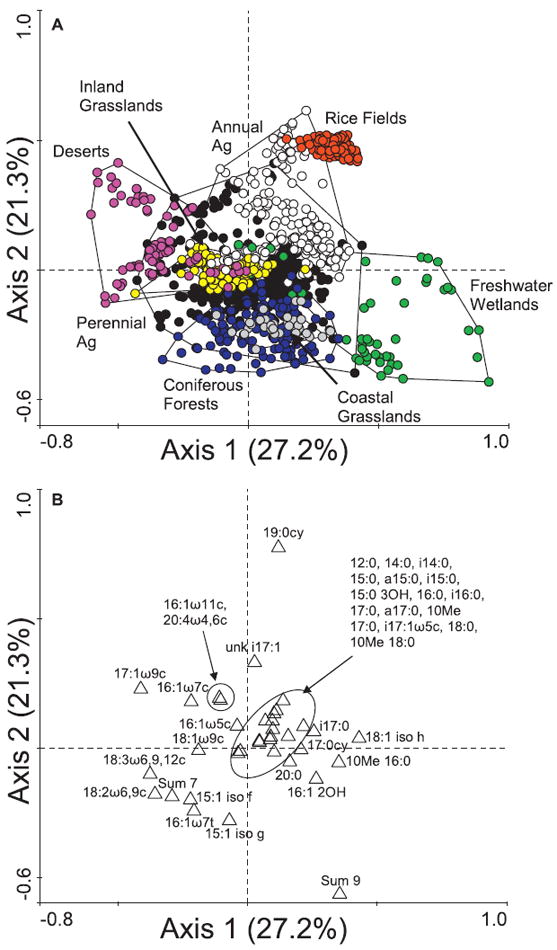Figure 2.

Ordination biplot of correspondence analysis (CA) results of all samples (a) and the 36 fatty acids included in the ordination (b) (n = 1117). Following ordination, ellipses were drawn around land-use types to aid in interpretation. Sum 7 indicates an unresolved peak potentially including the following fatty acids: 18:1ω7c; 18:1ω9t; and 18:1ω12t. Likewise, Sum 9 indicates an unresolved peak potentially including the following fatty acids: unknown 18.846 (a fatty acid approximately 18 carbons long); unknown 18.858 (a fatty acid approximately 18 carbons long); and 19:0cy ω10c. Key: deserts, pink; coastal grasslands, grey; inland grasslands, yellow; coniferous forests, blue; perennial agriculture, black; annual agriculture, white; rice fields, red; freshwater wetlands, green.
